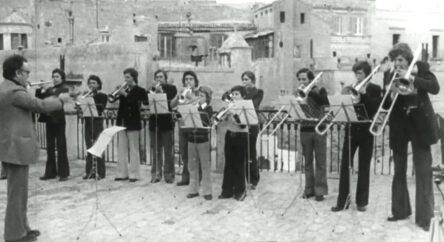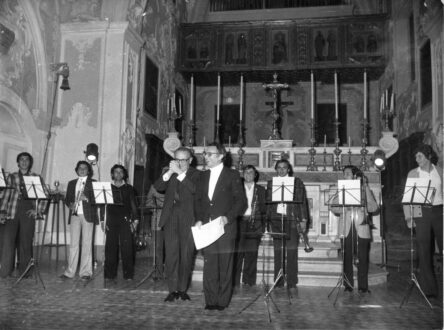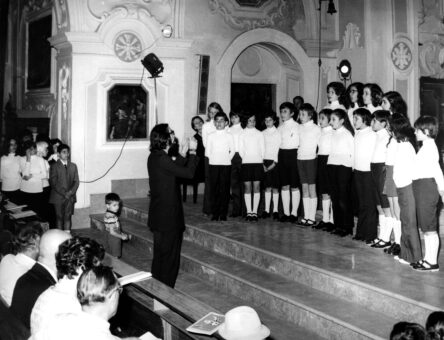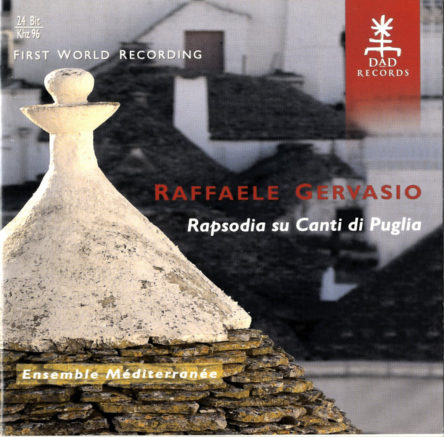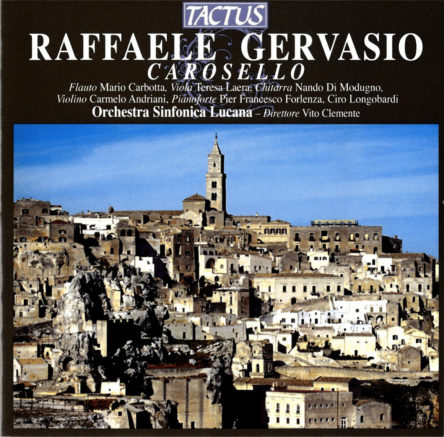Teaching and directorship
DOSSIER
Gervasio's experience as a teacher, first in Bari (from 1967) at the composition chair of the Niccolò Piccinni Conservatory, and then as director of the Egidio Romualdo Duni Conservatory in Matera (from 1969), came about almost by chance, at the request of Nino Rota, with whom he had an old and strong relationship of personal friendship and professional esteem. The commitment required in Matera was particularly difficult and demanding: it was a question of transforming the detached section of the Piccinni Conservatory in Bari into an autonomous structure, with all that this entailed from a bureaucratic, administrative, organisational and musical point of view. His constant concern, which is evident in his notes, is to achieve this feat as a musician, without losing sight of what for him is the purpose of his life: to write music. It is no coincidence that the only condition placed on Rota at the time of his election was that he not give up his composition students. After a particularly challenging first year due to operational difficulties that almost drove him to give up, thanks also to the full agreement and support of the Conservatory's president, Lucio Marconi, the Duni Conservatory in Matera began in earnest, which in a short time made him known and appreciated throughout Italy. A critical success factor is a 'high' conception of teaching, based on the ability to involve and enthuse both students and teachers.
Gervasio's musical production during the Matera years reflects this experience. As he himself writes, 'I am opening a new chapter in my life as a composer, dedicating myself to original compositions, transcriptions and elaborations for the students of the Conservatory. The aim is to involve and enthuse both students and teachers, transforming even the daily exercises into an experience in which the centrality of the student and the importance of sharing and playing together count. In this way, the end of year projects become real concerts involving even the youngest students, who are invited to play with students of different levels and with teachers. Many original works and reworkings were written specifically for the young students of the Matera Conservatory, including Apertura, for 5 trumpets in C, horn in F, 3 trombones and organ, Tecnica giornaliera, for two pianos, Le ciliege, for piano with six hands, Arpeggini per Agnese, for harp, organ and percussion, Marcia dei maggiolini, for 3 bassoons, violins, sistrum, triangle, harp and piano; some of which will have an independent life in the concert repertoire, such as Elaborazione dello studio per clarinetto di Gaetano Donizetti, for Bb clarinet and piano, Natale nel mondo for treble voices, organ, guitars, xylophone, bells, Invitation au violon, for solo violin, violins I and II, sistrum and triangle, harp and piano, In modo spirillo for solo viola, violins, sistrum, triangle, harp, organ, piano.
The Duni Conservatory soon became famous for its innovative teaching methods. This can be seen in the beautiful 1975 RAI broadcast Open School, directed by Giulio Morelli, which allows us to capture the special atmosphere and the prevailing enthusiasm, and in the photos of the recitals, which show the atmosphere that characterised the recitals at the Conservatory of Matera.
His experience as director of the Matera Conservatory came to an abrupt end in the autumn of 1976 due to a bureaucratic error. Gervasio then resumed teaching composition in Bari until 1980.
1975
1971-76
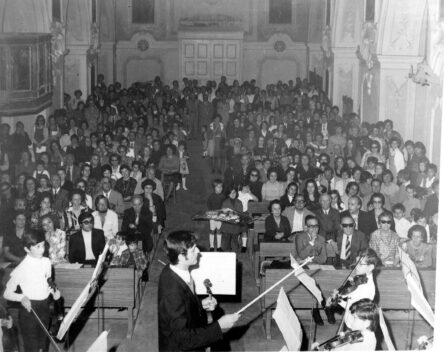
Saggi (1971-1976)
Camillo Grasso e la sua classe di violino; nel pubblico in prima fila a destra Gervasio (con gli occhiali scuri) e accanto il Presidente del Conservatorio di Bari, Vitantonio Barbanente. Nella fila dietro ci sono Nino Rota, Domenico De’ Paoli e Franco Giannelli. Sul lato sinistro ci sono Carlo Carfagna (con giacca chiara) e davanti a lui Carmelo Bruno
